By Jackie Clay-Atkinson
As you develop your preparedness plans, consider your water supply. You can go without food for weeks but when you lack water for as little as two days, your body begins shutting down.
Water is usually all around you in the form of streams, rivers, lakes, and even ditches. But very little of it is safe to drink without treatment. Even the most pristine, clear mountain streams can be contaminated with bacteria or protozoa such as giardia (which causes severe diarrhea and abdominal pain).
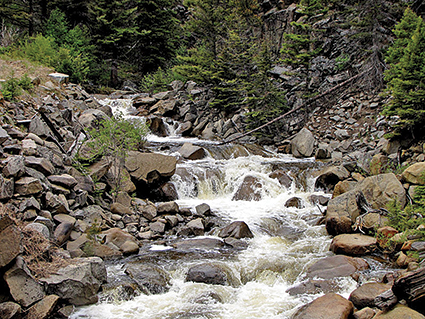
In many power-off emergencies, your well water will suddenly stop flowing and city water will only flow for a limited time, if at all, depending on the system. So let’s take a look at some of your real-life options in various scenarios.
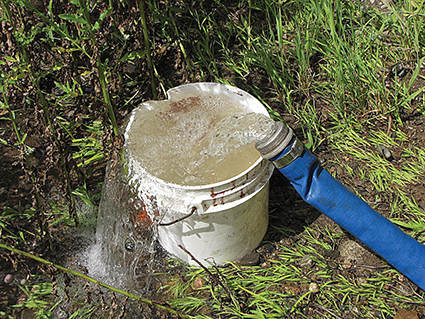
Bug-out bag
No bug-out bag is complete without at least two bottles of water in each bag. I choose a brand of water with a thicker bottle. Flimsy plastic bottles can easily puncture in your bag or with continual use, so choose sturdier bottles. I’ve made sure to choose bottles that fit inside of a cut-off aluminum soda can. When you nest the bottle inside the can, it takes up no additional space and the can will protect much of the bottle. I do tape up the top of the pop can to prevent dangerous cuts on the sharp edge. By poking a hole through both sides of the can and threading a green stick through it, you can use the can to boil water from an alternative water source. It is important to boil water for 10 minutes (covered to retain water) in order to be sure any bacteria or pathogens have been killed. This water, when cooled, can be poured into your plastic water bottles for drinking later on.
If everyone in your household starts out with two full bottles of water, along with some means of boiling non-potable water, life is much less stressful. Remember, those lightweight dehydrated foods require the addition of water.
You should also add some form of water filter to every bug-out bag. When I was young, the only options were water-purifying tablets (which taste yucky). Today, there are several reasonably-priced smaller water filters available which will fit into your backpack. The Katadyn Hiker, Katadyn Ceramic Mini, Sawyer MINI, and the do-it-yourself RapidPure Trail Blazer are all water filters that cost less than $100. They will protect you from waterborne pathogens and cysts and will provide you with good drinking water even from questionable sources.
Another product I’ve recently discovered is the Aquabot, a unique smaller hand-pressurized water bottle manufactured by Lunatec. I’ve got one filled with water clipped to the outside of my bug-out bag. This will hold drinking water as well as allow you to spray yourself with a heavier shower spray or a light cool-down mist. I’ve found that when you’re hot, just spritzing off makes you feel cooler, so you actually drink less water. Will and I each have one and plan on using one for non-potable water (showers and cooling) and the other for drinking water if we bug out together. They’re clipped to our bug-out bags with carabiners.
Vehicles
Every vehicle should have its own emergency water supply. During the summer, we always carry three gallons of potable water in the vehicles. Like the bug-out bag water, I choose containers which are sturdier as some cheap brands of water come in plastic gallon bottles which are very thin. These are prone to leakage while bumping around in the vehicle. This wastes your precious water and can damage other items you are carrying.
Carrying three gallons or more of drinking water in your vehicle will keep you going in an emergency, but it may also save you from losing your vehicle should the radiator overheat. Like my bug-out bag, I nest one of the bottles in a lightweight camping bucket in case we have to evacuate suddenly and need to boil a larger amount of water for drinking.
It is a very good idea to include a larger capacity water filter in your vehicle for a longer-lasting emergency. The Katadyn Basecamp and Platypus Gravity Works are good options for little more than $100.
Since we live in Northern Minnesota, we reduce the amount of water in the bottles each winter, saving about ⅔ of a gallon in each bottle. This allows for expansion while freezing and saves the plastic from breaking. It’s also a good idea to quickly fill any large water containers you have if there’s time before you must evacuate. Some emergencies give more warning than others.
The home water supply
During an emergency situation we are usually best served by staying home and riding out the emergency. But this means doing so without water from the faucet. Some folks treat the possibility of this happening by storing up a few gallon jugs of drinking water. This is a great idea, but I’ve found we use a lot more water than we think, especially when it comes to mundane things such as flushing the toilet and washing the dishes. A few gallons just doesn’t cut it.
In our home, we have two 300-gallon poly water tanks in the basement where our well water is stored for daily use as we live off-grid and can’t run a traditional well pump system. By being frugal with water use (short showers twice a week, washing clothes once a week with a wringer washer, and only flushing solids) we can get along for two months with 500 gallons of water. Now, this is with two people and two dogs, not a family of five with a baby in diapers. Simply put, you need more water than a few gallons will provide, especially if a lengthy emergency situation presents itself.
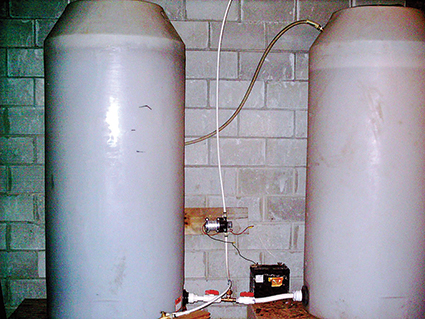
Store as much water as you can at all times. Just adding a 55-gallon plastic potable water barrel or two can be important. (Water is heavy; eight pounds per gallon. So be sure your floor is strong enough to hold the weight.) Also, consider keeping a large poly tank full of potable water in a sheltered location such as a shed or garage, for use in all seasons except winter. Before winter comes, you should drain the tank to prevent freezing.
Keep an eye on the weather and activities around you. If an ice storm or windstorm is forecast, don’t wait until the water stops coming out of your faucet. If you don’t have a hand pump, spring, or generator to power your well pump, fill everything you have that will hold a decent amount of water, whether it is the bathtub, hot tub, kids’ swimming pools, canning kettles, five-gallon buckets, etc. If that storm does not materialize, oh well. But if it does and the power lines go down, you’ll be very glad you have all that water!
Think of how you’d provide more water, if need be, when your stored water has been used up.
As I’ve said, we have a generator to run our well pump. And a bulk gas tank, which we use for the generator and farm tractors. But if the gas runs out, we can still use our other well with its pump which will run off our solar panels and battery bank. We also have a good spring and developed pond which the spring fills.
You may not be as fortunate to have water sources like ours, but nearly everyone has an option for getting more water, especially for showers and flushing the toilet, since you don’t need potable water for either.
Use common sense when gathering water, whether from rain barrels, creeks or snowmelt. Don’t drink it untreated or unboiled and don’t wash dishes with it. There could be bacterial or protozoan contaminates in any “iffy” water. You don’t need to get sick to compound your emergency situation.
If you have a well, you can install a hand pump which will work when your electric pump won’t. This, of course, will only fill containers; it won’t supply your house in a normal fashion. But it will give you plenty of water during an emergency situation. Some good brands include Bison and FloJak. You can even watch people construct homemade PVC pumps if you browse YouTube videos.
Treating questionable water
Sometimes you’ll have to use water for washing the dishes or even drinking which you won’t have time to boil. You can make this water safe by using additives such as chlorine bleach or water purifying tablets. Bleach is the most commonly available water purifier as most of us have bleach in our laundry rooms.
You need to have a bottle of plain liquid chlorine bleach and a dropper. The bleach should be 5-6% sodium hypochlorite with no preservatives and no additional ingredients. Do not use scented bleaches, color-safe bleaches, powdered bleaches, or bleaches with added cleaners. You want the good, old-fashioned stuff that smells like chlorine. It is now available in different concentrations. Ultra Clorox is a 6% solution instead of 5.25% but it is the same stuff. Keep a bottle of plain 5.25% or 6% chlorine bleach with no additives in the laundry room to use for water purification. Do not attempt to purify dirty water; run it through a filter such as coffee filter or even a piece of clean T-shirt first to remove most dirt and debris.
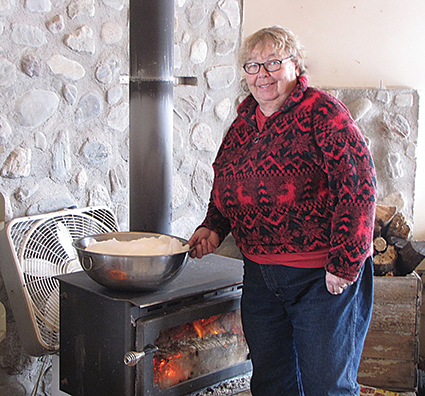
To treat water with chlorine bleach, put the water in a clean container and add 16 drops of bleach for every gallon of water. Stir in the bleach and let the water stand for 30 minutes. If the water does not have a little smell of bleach, repeat the dosage of 16 drops per gallon and let it sit for another 15 minutes. If it smells of bleach now, it is safe to drink. If it doesn’t smell of bleach after two treatments, the water is too dirty to use. Throw it away and treat a new batch of water, taking care to thoroughly filter it through a coffee filter or clean T-shirt.
Amounts of bleach for different containers:
quart bottle: 4 drops of bleach
2-liter soda bottle: 10 drops of bleach
1-gallon jug: 16 drops of bleach (⅛ tsp.)
2-gallon cooler: 32 drops of bleach (¼ tsp.)
5-gallon bottle: 1 teaspoon of bleach
Unlike old-time iodine water purification (tasted awful and didn’t kill some organisms), chlorine dioxide tablets and water treatment drops effectively remove the worst viruses and bacteria without leaving an unpleasant aftertaste. Chlorine dioxide tablets and liquid drops are highly effective and affordable — on average, they cost between 50 and 75 cents. Vacuum-sealed tablets are shelf-stable for four years, making them an excellent choice for emergency storage. Chlorine dioxide kills giardia in 30 minutes and the more stubborn cryptosporidium in four hours. Potable Aqua, Aquamira, and Katadyn MicroPur are a few of brands that manufacture water purification tablets and chlorine dioxide drops. One pack of 30 tablets usually costs less than $15.
Conserving water
Obviously in an emergency situation, you can’t use water like you do now. One of the heaviest home uses of water is simply flushing the toilet, so that’s the place to start. We posted a sign above our toilet that reads, “If it’s yellow, let it mellow. If it’s brown, flush it down.”
But when water’s really scarce, you can’t flush. Either line your toilet with a plastic bag or use a five-gallon bucket. Add some sawdust or pine shavings. Keep a bag of shavings handy. When you go to the bathroom, wipe and toss the paper into a garbage bag. Toss in a handful of shavings to cover the you-know-what and close the lid. We even had a second bucket without shavings just for urine. That made it easy to pour out in a discrete place and made our shavings last longer. We lined our poo bucket with a biodegradable plastic bag to make cleaning easier. When nearly full, we tied it off and put it into a garbage bag outside. This worked like a charm. You might want to add a couple of plastic five-gallon buckets and a bale of shavings to your emergency preparedness shelves.
Baths and showers are water hogs. Those oh-so-comfortable half-hour showers and baths filled up to our chins are not for emergencies! But you can still take a shower twice a week with a solar or battery-operated shower, hung from your shower head, using water heated by the sun or with a propane or wood kitchen range. Just make the showers short so others can also get clean.
You can also wash clothes using minimal water. Once a week, I use my wringer washer and rinse tub with generator power. This uses 15 gallons of water and cleans all of our clothes. Without the generator, I used to do laundry in a washtub or the kitchen sink, in three gallons of water to wash and another gallon to rinse.
Hopefully, you’ll never have to use many of these tips. But if you do, it will make any emergency you experience less frightening and more comfortable for you and your family.


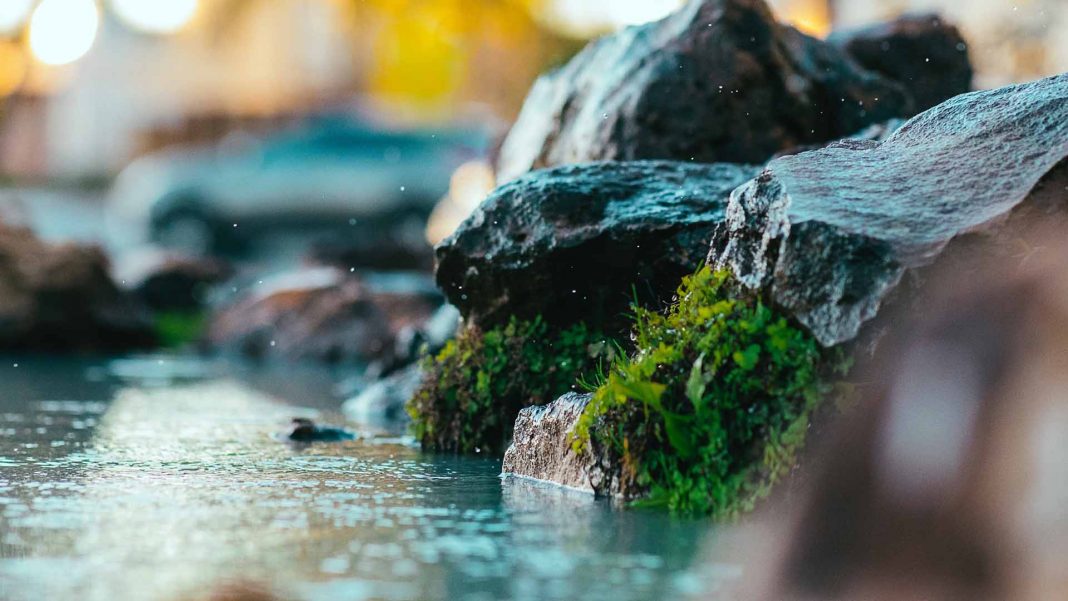







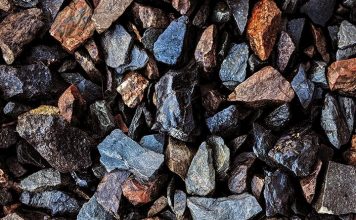
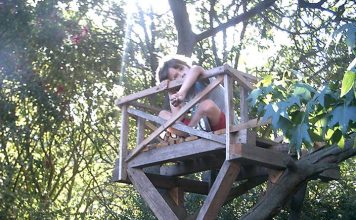
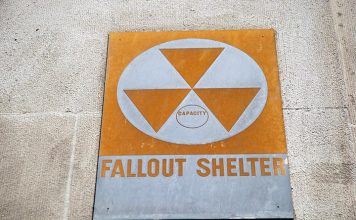
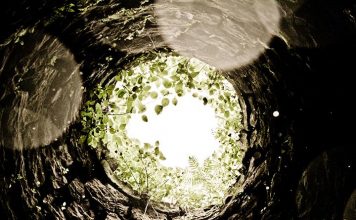

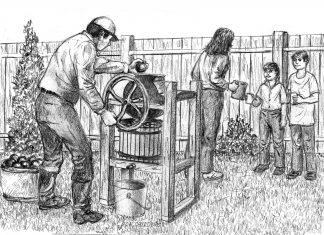
I have a couple of questions. First, won’t the water develop bacteria, etc. sitting in a car all summer even if it was from the tap? How long can you keep the water in bottles at home in a bug-out-bag before you could have pbms?